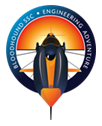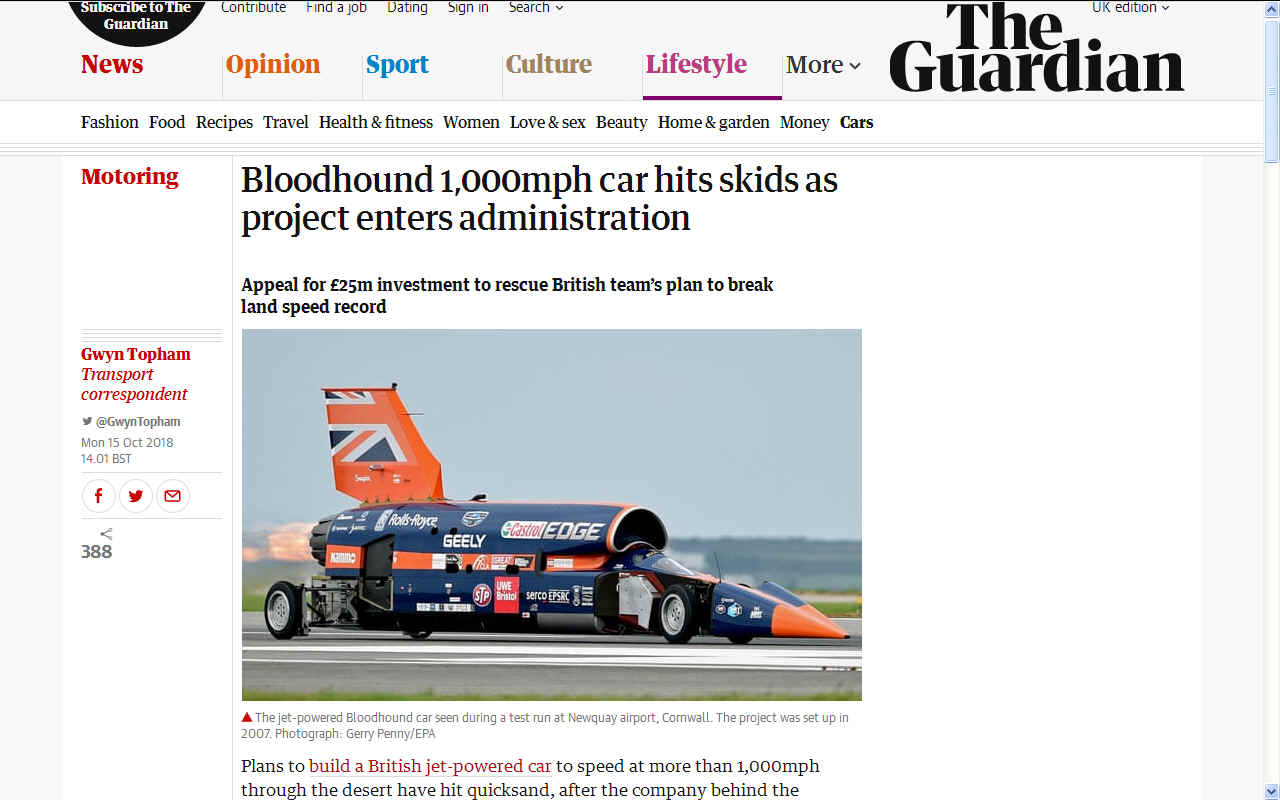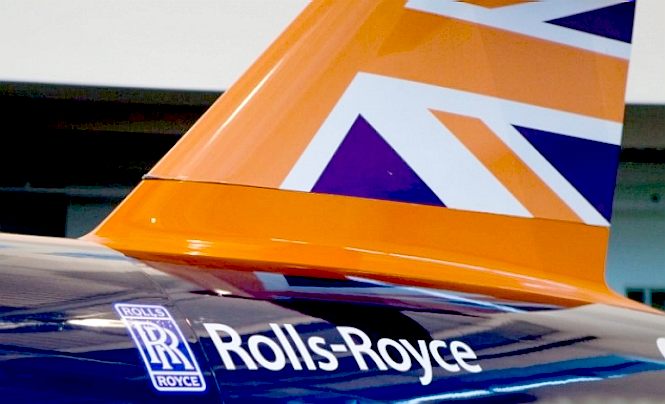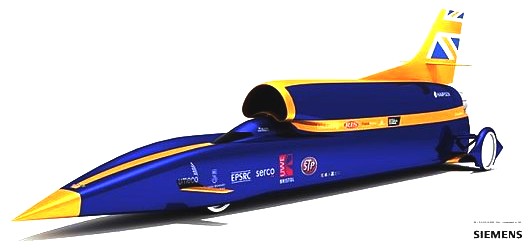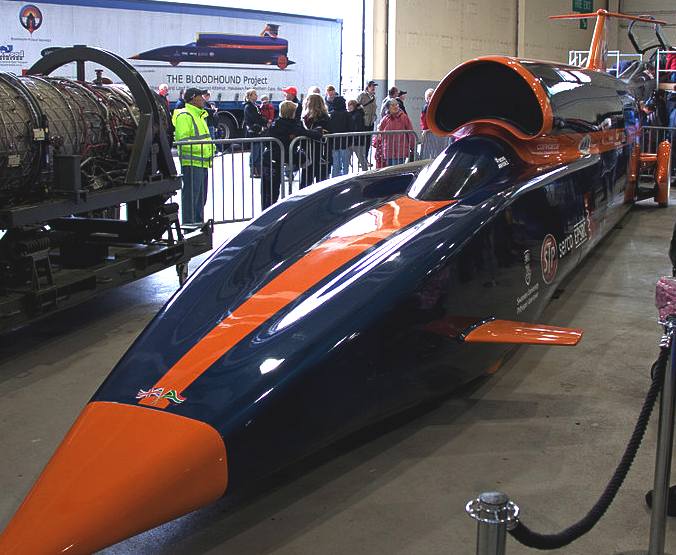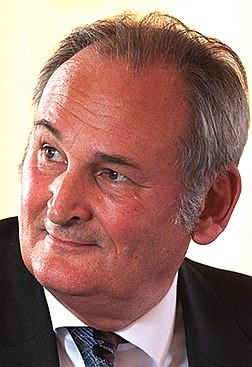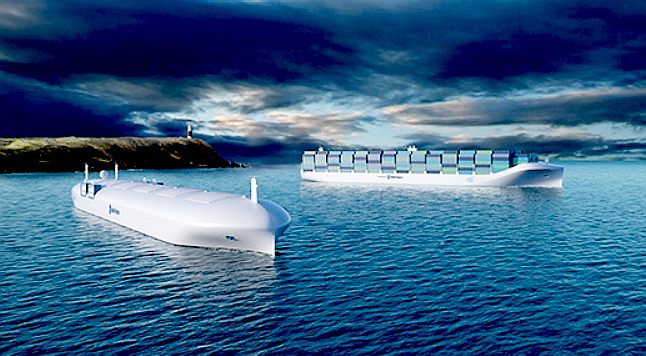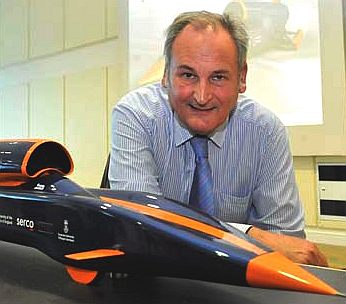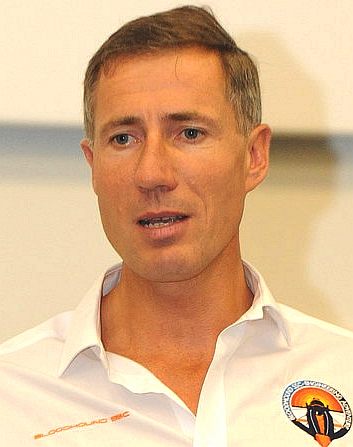|
THRUST & BLOODHOUND SSC
AUTOMOTIVE A TO Z CLIMATE CHANGE EVENTS FUEL CELLS HYDROGEN SITE INDEX UTILITIES
The BLOODHOUND Project
was spawned from Thrust 2 and Thrust
SSC, both projects with Richard
Noble at the helm as the originator of the British land speed record
contingent. The project is now in financial difficulties and seeking a
bailout by investors in exchange for a PR return.
The BLOODHOUND Project is the name of an international education initiative focused around a 1,000 mph world land speed
record attempt. The team aim to break the land speed record with a pencil-shaped car called BLOODHOUND
SSC, powered by a
jet engine and a rocket designed to reach 1,000 miles per hour (1,609 km/h). It is being developed and built with the intention of breaking the land speed record by 33%, the largest ever
margin.
Bloodhound SSC concept video
The project was announced on 23 October 2008 at the Science Museum in London by
Lord Drayson, the then Minister of Science in the UK's Department for Innovation, Universities and Skills, who in 2006 first proposed the project to Richard Noble and
Andy Green; the two men who between them have held the land speed record for 29 years.
Artists impression of the Bloodhound SSC car
Bloodhound SSC
DESIGN
The project is based in what used to be the Maritime Heritage Centre on the Bristol
harbourside, located next to
Brunel's SS Great Britain. This building has been renamed the Bloodhound Technical Centre.
Bloodhound SSC 1,000 mph supersonic car
Richard Noble, Bloodhound SSC leader
CONSTRUCTION
EDUCATION
The BLOODHOUND Project is first and foremost an education project designed to inspire future generations to take up careers in science, technology, engineering and mathematics by showcasing these subjects in the most exciting way possible.
COMPETITION
Craig Breedlove launched a fresh Spirit of America supersonic project in 2014, the previous project having been sold to US adventurer Steve Fossett.
ROLLS ROYCE
Rolls Royce have (rather superbly) now given their official backing to Richard's project. Rolls Royce are also blazing a trail in a quest to introduce unmanned ships. Bully. Unmanned ships should be safer than crewed vessels and remove a lot of the slog. The next step is to reduce reliance on fossil fuels, perhaps using energy from nature. We know that RR have been working on wave powered devices, heading in that direction.
Oskar Levander, VP of Innovation, Engineering and Technology at Rolls Royce is quoted as saying: "Ship efficiency is the principal driver for the future as it directly impacts operating costs. There are many ways to improve it – change the vessel’s design to do its job more effectively, improve the hull shape and systems to reduce fuel burn, and by optimising the transport chain of which the vessel is a part. All these factors must be evaluated together, avoiding silos of thinking to get the best results.
The era of cheap energy seems to be over; we are at the dawn of the fuel transition era. Today almost all marine fuel is oil based. In the future, there will be three or more choices. Heavy fuel oil (HFO) will not disappear, and low sulphur distillates will gain acceptance. Alternatives such as dimethyl ether (DME), methanol and other biofuels will probably play a smaller part. Fuel choice is driven by cost, and increasingly by emissions regulations. These rules mean there is no alternative but to move to greener fuels or fit abatement systems. Emission control areas have been introduced to limit NOx and SOx in Europe and the U.S. Legislation, plus incentives like Norway’s NOx emissions tax and subsidy, is cutting pollution levels. Now attention is turning to the gases, which contribute to climate change, first is CO2. Reducing CO2 emissions is not so easy, and I have been convinced for a long time that LNG will be the fuel of the future for most ships. Natural gas is available worldwide and when used in a gas engine, CO2 reduction is sizeable, at over 20 per cent. It also supports human health concerns, as particulates are negligible.
LNG as a marine fuel has begun to take off, but so far is restricted by lack of bunkering. The engines and systems to burn the fuel are available, proven and simple to use. The transition looks like it will be similar to the change from sail to coal, which was first used on routes where coal was already available, before expanding worldwide. Choosing a fuel is one thing, but improving ship efficiency to use less is another. Times are changing, with statutory measures such as Energy Efficiency Design Index (EEDI) coming in. I approve of the idea of encouraging more efficient ships with a design index, but I am sceptical about the formulations used in EEDI. It is penalising installed power and thereby ship speed, not focusing on the actual efficiency of the design in real conditions. There is no doubt fuel efficiency will remain prominent, with plenty of new ideas and new twists on old ones."
Thrust 2 | Thrust SSC | Bloodhound SSC
Bloodhound v Jet fighter plane
Richard Noble and Bloodhound SSC model
LINKS
Autoracing Speed Records at the Open Directory Project Aussie Invader official website - challengers supersonic showdown The UK Land Speed Racing Association Andy Green's Bloodhound SSC diary for the BBC Bloodhound SSC at Swansea University Bloodhound SSC at the AoC (Association of Colleges) 2010 Annual Conference Supersonic car targets 1,000mph. BBC NEWS - Science & Environment Faster than a bullet - the 1,000mph car". The Guardian. "Britain's Bloodhound car could reach 1,000mph". The Times Online Unleash the Bloodhound: How to design a 1,000mph car". The Guardian Bloodhound SSC vs Eurofighter Typhoon race (animation) University of the West of England Project Launch Video Supersonic car targets 1,000mph". BBC News. BBC. 22 October 2008 The land-speed record: How to build a 1,000mph car", 7 May 2011, p. 88. Swansea University help design BLOODHOUND SSC
Andy Green driver Bloodhound SSC at Bristol University
Swansea University Desert Selection Programme. Swansea University Supersonic Bloodhound car to be built in Bristol. BBC. 23 November 2009 Model of Bloodhound supersonic car unveiled
Bloodhound SSC STP 1050 mph
Copyright © website 2022, all rights reserved, save for educational and media review purposes. You do not need permission to use our information if it is to help promote a low carbon economy. This is a low carbon website that loads quickly and is as kept simple as possible while still providing useful information. Cleaner Ocean Foundation Ltd and Climate Change Trust.
|
